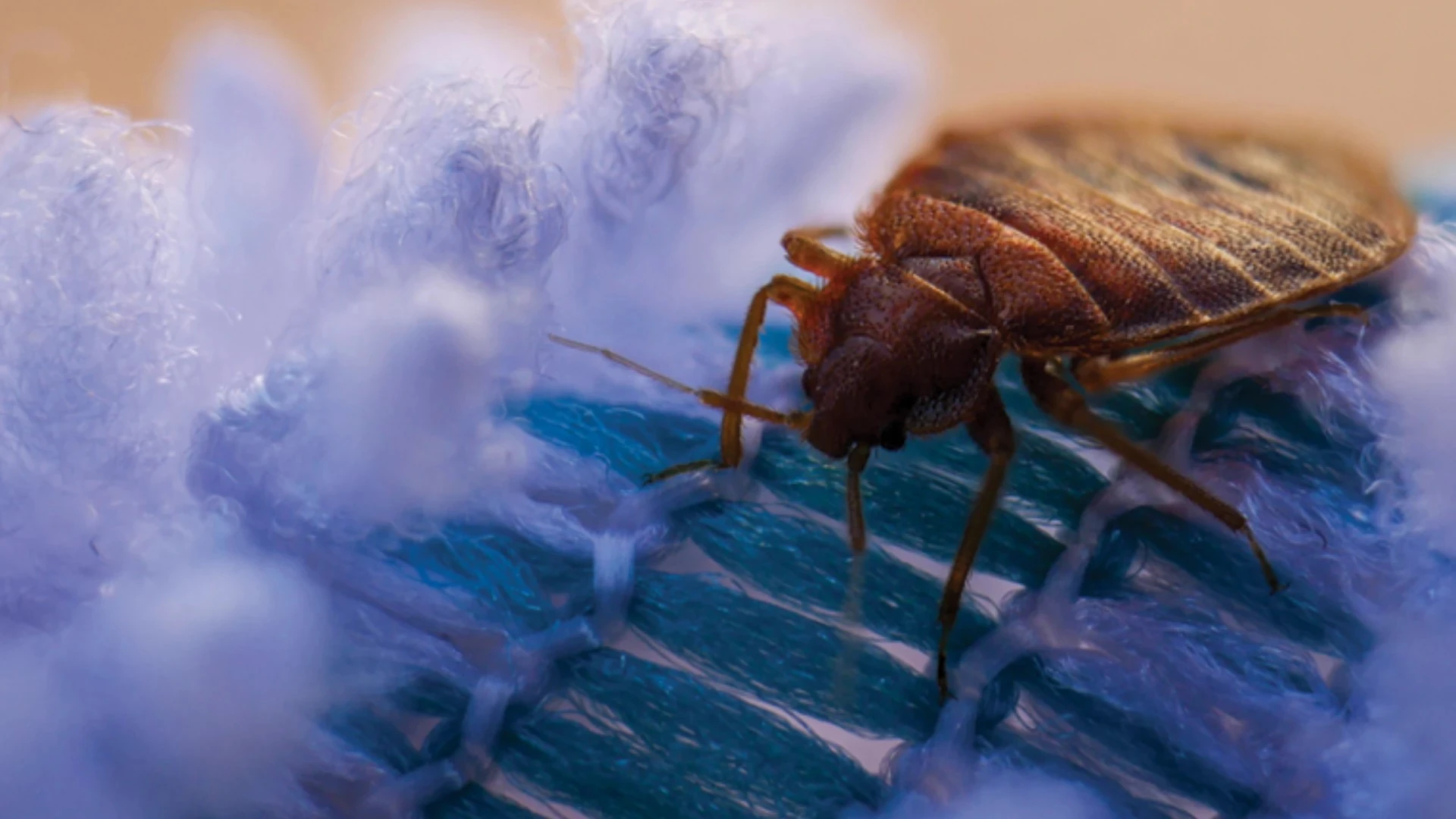A fly on the wall. Dropping like flies. Shoofly pie. Flies have made a name for themselves in everyday speech because they have become an accepted pest in the everyday human environment. Unfortunately, for the pest management industry, this means that many home and property owners assume a rolled-up newspaper is enough to solve their problem. In order to help current and potential customers, the pest management professional must find ways to convince them that targeted management approaches are the best solution to their problem.
Dr. Jerry Hogsette, a research entomologist who works with the USDA-ARS at the Center for Medical, Agricultural and Veterinary Entomology, Gainesville, Fla., says he believes such solutions are not only effective, but also necessary for reducing the overlooked hazards caused by these accepted pests. At the National Pest Management’s 2010 PestWorld convention in Honolulu, Hawaii, Hogsette offered up valuable insight on the behavioral patterns and lifecycles of flies.
Not only is this knowledge essential for new technologies to combat the pest, but, as Hogsette said, even the most basic understanding of fly behavior can maximize the effectiveness of current tools and services within the pest management industry, allowing for more efficient, low-cost, high-yield, customer-approved results.
What is a fly? Hogsette identified a fly as "a highly specialized group of insects that have only one pair of wings." While most other insects have four wings (or two pair), the fly’s second set of wings has evolved into a haltere, or mechanism that controls flight. Though many have similar characteristics, each fly also has distinct, visible trademarks that can separate it from the rest. If you know these distinctions, you can avoid misidentification and help correct common misconceptions.
Where does it live? Though each species has its own preferred habitat, most tend to lay their eggs in warm, safe, nutrient-rich environments. In natural or rural environments, these tend to be areas with large quantities of organic materials like manure, hay, soils and certain grasses. In urban areas, flies lay their eggs anywhere from sidewalk cracks to drains.
How does it operate? The name "fly" is fitting for this insect, which, in its adult phase, can cover surprising distances by taking to the air. Adult house flies, for instance, fly about five miles per hour and easily can cover distances of 20 miles. Adult stable flies, on the other hand, have been known to disperse with weather systems to distances up to 135 miles.
Flies have three distinct goals: to mate, to eat and to survive. In order to achieve these goals, they use their flight and senses to follow odor, temperature and color-contrasted trails. Flies use odors to identify potential food and mating sites, temperature and barometric changes to locate comfortable living conditions, and contrast between light and dark to find entrances and exits to their desired destination.
What does it eat? One of the most fundamental ways to arrange fly types is by whether they are biting or non-biting. Biting flies include stable, horse and sand flies and mosquitoes, which are also flies. Non-biting flies include the house fly and the bot flies, which have neither a mouth nor a GI tract. He further broke down biting flies by whether both sexes — or only females — feed on blood. Though biting flies need blood to reproduce, they use nectar for food and can survive but not reproduce on nectar alone. As for non-biting flies, "They like carbohydrates like sugar because that’s what they use for energy," he said. The non-feeding bot fly adults live only a few days, and immatures live inside a host.
What are its strengths? Nuisance flies are resilient insects. House flies complete their lifecycle and enter the adult stage in less than two weeks. "If I go out to a farm and I see house fly larvae in a third instar, which is about halfway through the cycle, those people can’t afford to say, ‘Well, I’ll take care of it tomorrow’ because in three days, those are going to be flying around," said Hogsette.
He said most fly larvae can be "very resistant to death." For instance, both house and stable flies must be submerged for four consecutive hours to drown. They also can withstand temperatures up to 120°F, and even pass through temperatures up to 165°F.
In a nutrient-rich soil that allows for air penetration, fly larvae can develop between 12 and 24 inches under ground because the earth provides cushioning from aboveground pressure. Adults also have the ability to sense changes in barometric pressure, which means that they know when to find shelter from unfavorable weather conditions.
Weaknesses? Despite their strengths, fly behavior can also be used to manage the insect. Flies tend to investigate any area that has contrast between light and dark, which means that they can be attracted to a specific target from a distance. Hogsette says he believes flies are attracted to this contrast because they think it signals a way to pass through a certain area.
Though their dependence on odors has its advantages, flies will recognize that odors signify the presence of their desired target, even if that target is not visible. This means that a trap that smells like a horse does not need to look like one to attract a fly. Furthermore, like humans, flies cannot see in the dark. "If it’s too dark for you to see, the flies probably can’t see," he said.
Like snakes, flies are cold-blooded. "Generally speaking, a house fly needs an internal temperature of 60°F to 65°F to fly," said Hogsette. "If you’re out on cold mornings, you can scoop them up with your hands because they can’t move."
Flies also will avoid windy conditions, "Because [they] can’t control their flight under even a little bit of wind," he said. They also try to avoid bad flight conditions, which could damage their wings. A fly that can’t actually fly becomes easy prey.
*****
Fly Control Treatment Tips
The key to stopping fly issues is to intercept these pests outside of your customers’ structures before they get inside, using both pesticide and non-pesticide treatments.
Pesticide treatment recommendations for filth flies include:
• Intercept house flies outside commercial establishments and animal facilities by scattering Maxforce Granular Fly Bait around the perimeter, including near Dumpsters and trash compactors where flies are attracted to resources. Alternately, place the granules in bait stations when scattering bait is not an option.
• Outside, apply Maxforce Fly Spot Bait to sites and surfaces where flies land before entering the structure. Apply to Dumpsters, trash cans, inside trash can lids and surfaces where flies find shelter from sunlight. Look for "fly dirt," the fecal spotting on surfaces where flies rest.
• Inside commercial dining areas, apply Maxforce Fly Spot Bait to the upper corners of windows, vertical lines and other house fly resting areas (be sure to check local pesticide application regulations for definitions of food-handling areas).
• Also apply in interior, non-food sites, i.e., lavatories, trash rooms and non-food storage areas.
• Outside homes, spray Maxforce Fly Spot Bait around trash areas, decks, patios and dog runs.
Non-pesticide treatment recommendations for filth flies:
• Improve sanitation, dispose of garbage regularly and ensure trash containers have tight-fitting lids. Trash cans should be cleaned on a regular basis.
• Dispose of animal waste quickly; remove potential breeding sources.
• Seal cracks, crevices and entry points around a structure’s perimeter.
• Keep doors and windows closed; ensure screens are in good condition and fit tightly.
Source: Environmental Science, a business unit of Bayer CropScience
*****
Why is it a pest? In nature, flies are a beneficial part of the environment. Many are decomposers, breaking down organic waste matter that would otherwise pile up. Flies probably pollinate more flowers than bees, but they do not produce honey.
In human environments, however, flies can cause many health concerns. Biting flies attack livestock, horses and pets left outside. Flies feast on their blood, leaving behind open sores and infections. When too many flies congregate on one animal, that animal may become too distressed battling the flies to continue feeding itself.
Flies will also target humans both indoors and outdoors. Certain flies, like the mosquito, have been known to transmit potentially fatal diseases. Other flies, like the stable fly, cause pain with each bite, and if you happen to be in an area where stable flies tend to congregate, you risk facing a lot of bites. On the other hand, some flies won’t cause any initial pain, but their bite will leave you itching for days to come.
Even more problematic, however, is the fly’s ability to transmit diseases even when it’s not biting. Hogsette said a fly’s primary method of pathogen transmission is mechanical: "They walk in the stuff. They pick it up. They walk in something else. Actual transmission is dependent upon how long the pathogens can live on the external surface." Though mechanical transfer is the primary method of pollination, it also means that a fly landing in an unsanitary waste will carry that waste to its next destination. "Not only can flies move bacteria and pathogens on their feet, but they can ingest and keep shedding certain bacteria for…as long as they’re alive," Hogsette said.
How to spot a fly. If a PMP knows what a fly needs to survive, he can better focus his efforts on areas where flies tend to live. Though the telltale buzz of an adult fly is common in many households, a PMP must be able to read other potential indicators in order to determine whether that fly is part of a larger pest problem.
In rural areas, stable flies can be predominant. Many animals react to these flies by stomping their feet, twitching, swishing their tails or constantly chewing past bites. On livestock, the most targeted area is often the legs, while many smaller animals suffer a large number of bites behind the ears. Humans are also targets and are most often bitten behind the knees and on the elbows.
In rural and urban areas, house flies tend to leave evidence of their presence at favorite hot spots. Flies like to congregate on leaking pipes or near food waste receptacles, anywhere they have easy access to food and water. At these locations, they’ll often leave excrement and vomit behind that, to the naked eye, may look like brown specks. With few natural predators in a human environment, when a fly dies, its body remains behind as a testament to its presence. Knowing where to look for these signs can make all the difference in detecting a fly problem before it’s too late.
Preventing an invasion. There are many methods to treat for flies, but Hogsette says one of the best approaches is to prevent the flies from ever becoming a pest threat. Two of the most effective ways to reduce incidents of fly problems are to increase sanitation efforts and limit fly access to desired locations.
In rural areas, sanitation is often one of the hardest problems because keeping large facilities clean requires more workers than many producers can afford. In urban areas, many fly targets are areas that have food build up, but are rarely cleaned. In grocery stores, for instance, they "don’t rotate the stock, or they have some beautiful display items where you can’t properly clean or dispose of the fruit that’s degraded," said Hogsette. Cleaning, however, removes nutrient-laden food-sources left behind that would otherwise attract flies.
If removing fly attractors, such as food, is not a viable option, another possibility is to remove a fly’s access to those areas by properly sealing or closing all potential entrances. On cool days, most buildings emit heat, which will attract the cold-blooded insect. The contrast of a dark doorway during the day or of a well-lit doorway on a dark night will also attract flies. Of course, open doorways emit a lot of pleasant odors that will lure in any fly searching for a meal.
Maximizing trap effectiveness. When flies do become a problem, a pest management professional can use this understanding of fly behavior to determine what traps are needed and where to put devices to maximize their efficiency. Hogsette provided three possible examples to illustrate this point.
Fans. In a supermarket or grocery store, food is everywhere, but certain areas are more attractive to flies than others. The bakery and deli, for instance, have all the qualities that will attract flies: warmth, fresh odors and food. The meat and fish section, on the other hand, may also attract a fly with fresh odors, but once a fly hits the cold air in these areas, it will either turn around or perish. So, how does a pest management professional keep the flies out of the deli when the attractiveness of a trap’s odors may not compete with the quantity of readily available food? "Fans," says Hogsette. The air currents from fans act similar to wind and repel flies.
Window Traps and UV Lights. In a household or other residential building, window traps and UV traps are often effective because they take advantage of the fly’s recognition of contrast between light and dark. Placing a window trap at the base of a window will catch flies when they get too tired trying to escape through the glass. When it comes to UV traps, he’s also observed that contrast is not just important with the brightness of the light, but also with the color of its base. "Some companies like black glueboards because it looks like you can’t see the flies down there, and some like white because they want their customers to see that they’re actually doing something proactive," he said. Hogsette observed, however, that black glueboards, despite their competitiveness in lab testing, are not as attractive to the flies as white glueboards when used in the field.
Box and Jar Traps. The third of traps Hogsette describes are the box and jar traps. These traps are used outside where a UV light and window trap would be ineffective. When the fly senses the bait, it enters through an opening in the trap. Once inside, however, the fly sees the translucent walls of the trap as a way out and flies deeper into it. These traps work because the fly sees the contrast in light and dark upon entering and it appears there is a way to exit the trap other than the way it entered.
FINAL THOUGHTS. Though Hogsette admits there are many secrets to fly behavior that have yet to be uncovered, he has also witnessed the increased efficacy of fly pest management when that management is tailored to fit the fly’s behavioral patterns. By learning to understand how flies and other pests operate, the pest management industry can continue to develop cost-effective, alternative solutions that target the desired pest by capitalizing on its own behavior.
The author is a freelance writer and can be reached at kmannes@giemedia.com.

Explore the June 2011 Issue
Check out more from this issue and find your next story to read.
Latest from Pest Control Technology
- Rentokil Terminix Expanded in Key Markets with 2024 Acquisitions
- In Memoriam: Joe Cavender
- Certus Acquires Green Wave Pest Solutions
- Liphatech Adds Alex Blahnik to Technical Team
- Do the Right Sting: Stinging Insect Identification, Management, and Safety
- VAGA's 8th Annual Veterans Thanksgiving Appreciation Dinner
- Clark's Blair Smith on the Response to Increased Dengue Fever Cases in Southern California
- WSDA, USDA Announce Eradication of Northern Giant Hornet from U.S.





